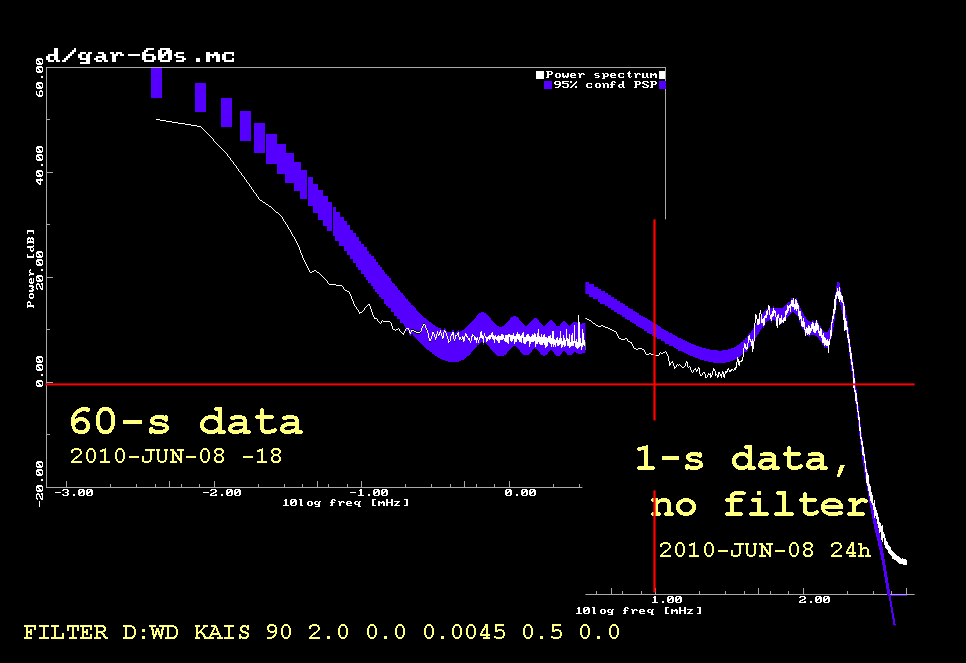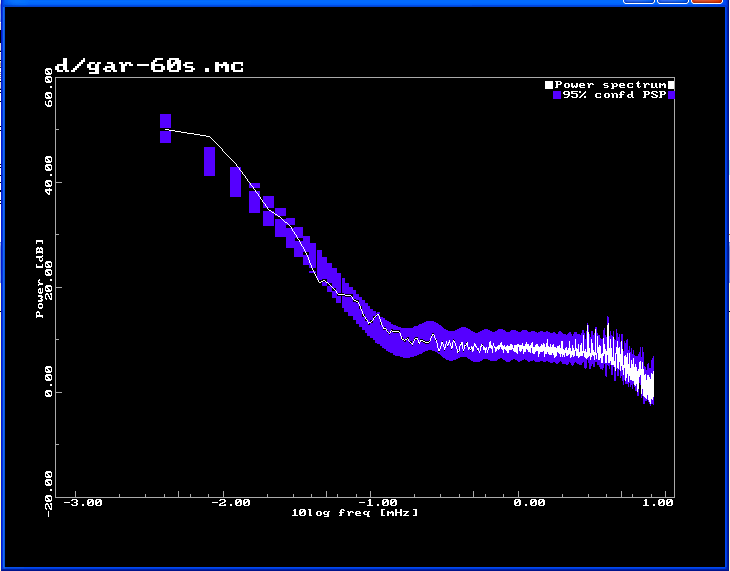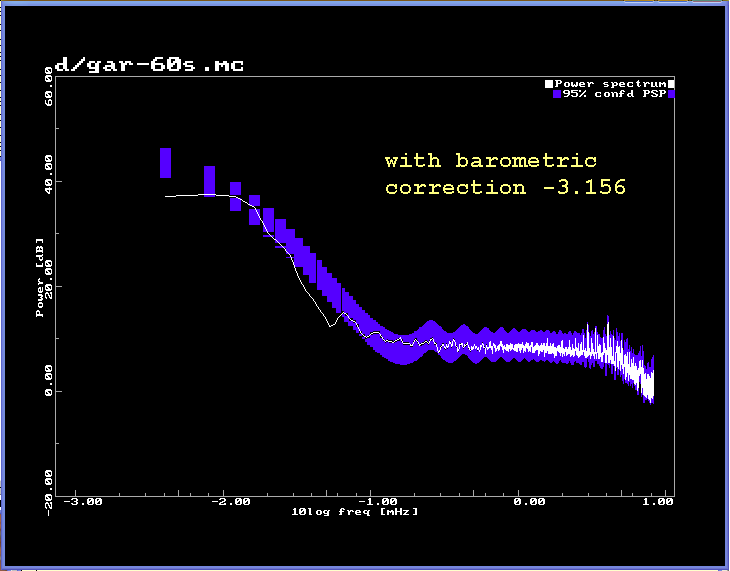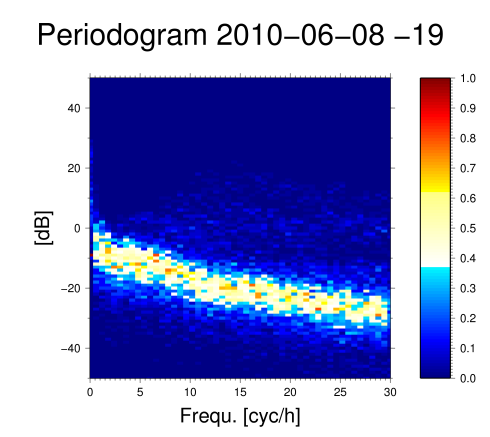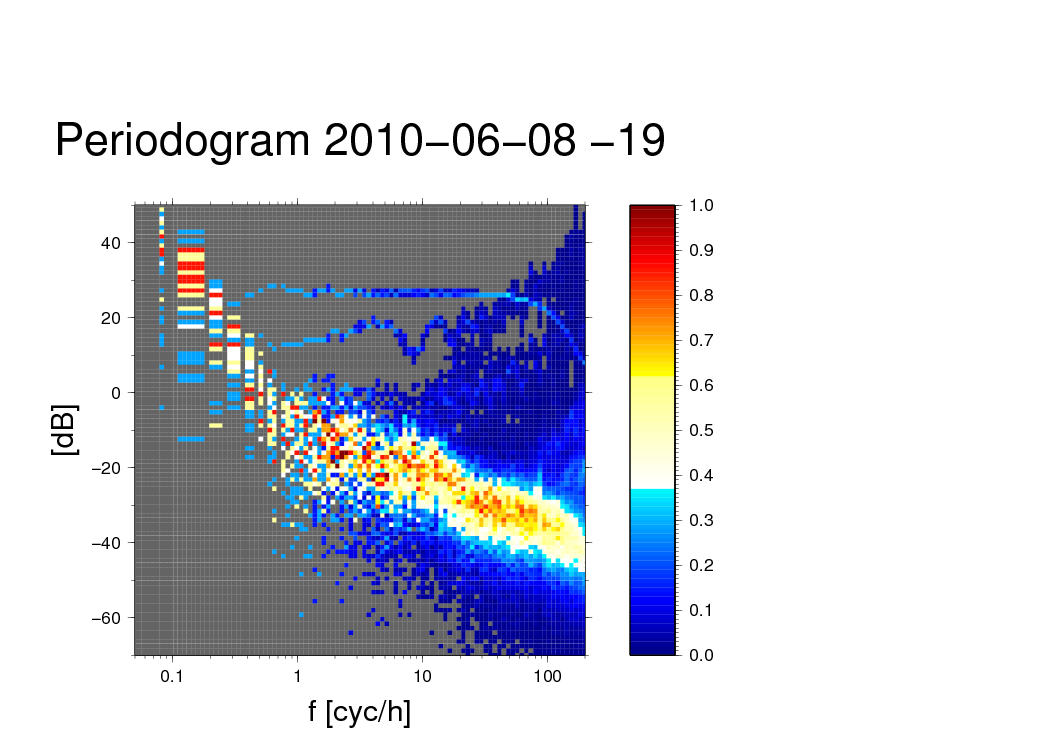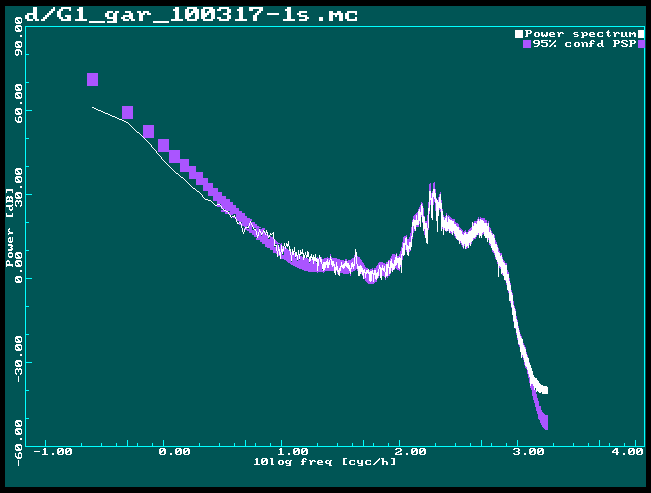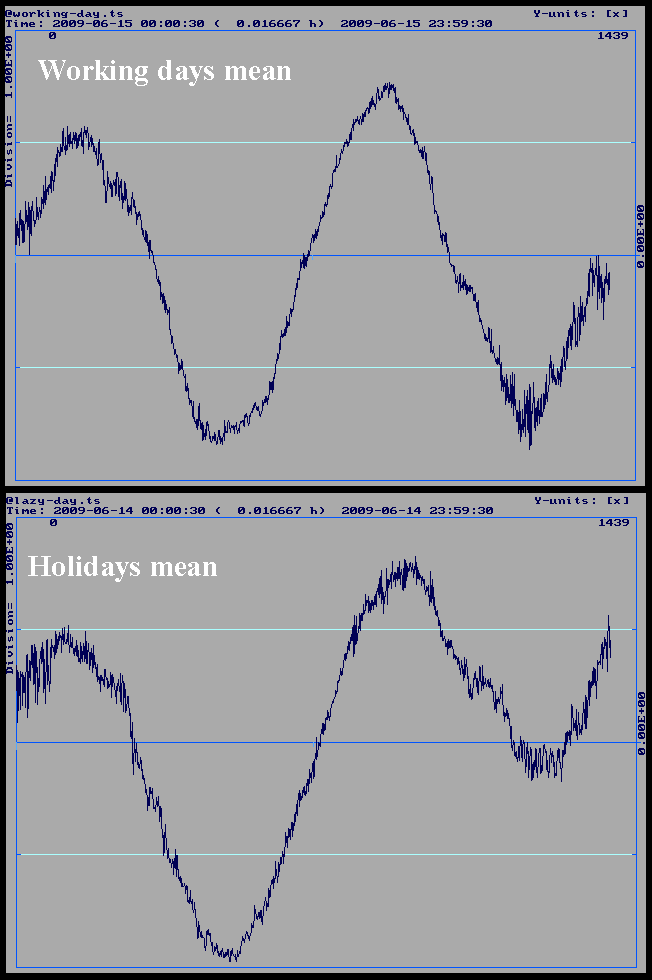

Difference working day -
holiday
Units: 1 nm/s2 between horizontal lines (left), 0.25 nm/s2 (above)
Time from midnight to midnight CET(S), 1-min intervals
 |
 Difference working day -
holiday
Units: 1 nm/s2 between horizontal lines (left), 0.25 nm/s2 (above) Time from midnight to midnight CET(S), 1-min intervals |
